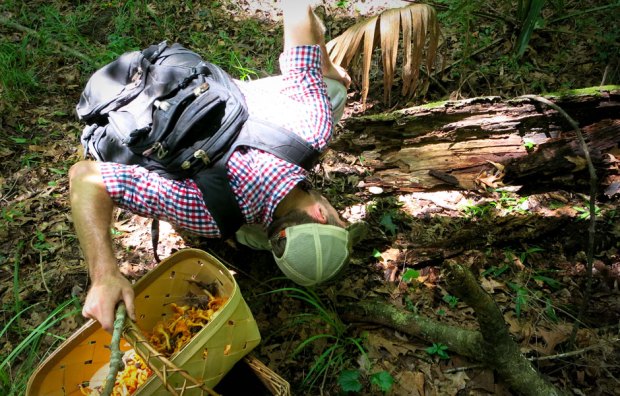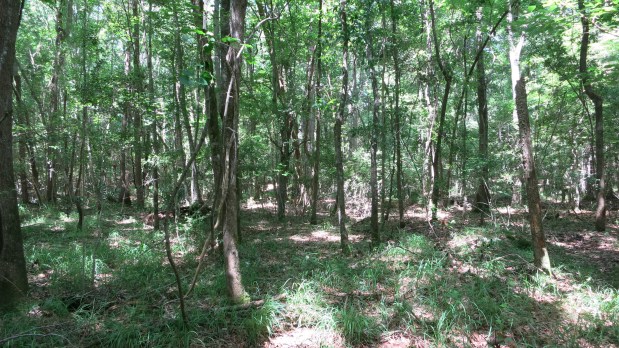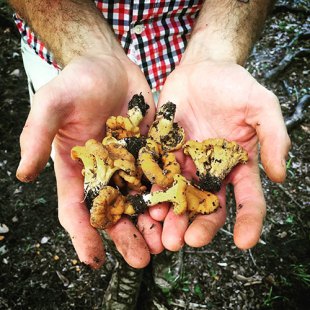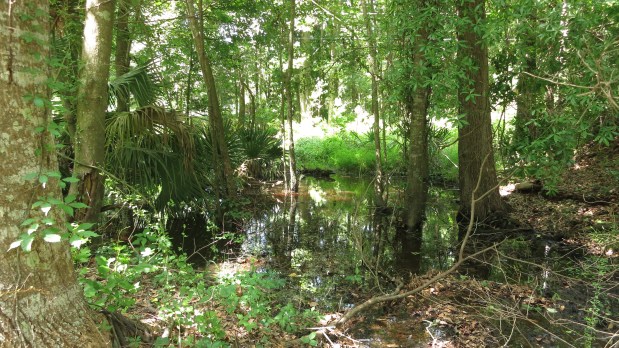Three years ago we would have needed a serious editorial meeting to consider whether foraging was a serious topic or a hyped up hipster fad. Oh wait, we did actually have that meeting and I got too many ho hums to proceed. Alas, the time has come where foraging has gone mainstream. Chefs from Cali to the Carolinas are in on it and busy chefs in New York are eager for special deliveries of freshly picked ‘shrooms to wow their patrons.
What is foraging you may ask? It’s the practice of ‘hunting’ for wild mushrooms, herbs and other earthy delicacies like truffles and sundry edible plants.
One such well known forager is Nick McNevin who is the Executive Chef at The Collins Quarter in Savannah. We spent a humid afternoon in the swamps of the Lowcountry (before he moved to Savannah) sourcing chanterelles that he takes home, cleans and FedEx’s to chefs around the country.

While we were diving under Spanish moss and spider webs I learned all about how he learned all about mycology. Let me tell you, he is a really fun guy. (puhleese laugh at that pun).
How did you find out about getting a foraging license?
As a chef, I love being involved in any part of the food process, which would explain why I have two beehives in my yard and grow lots of my own garnish for the restaurant. As tired as the trend is, there’s something really cool about the farm to table movement, and getting your hands dirty in order to put food on the table. After moving to the Lowcountry and learning that chanterelle mushrooms grew wild here (they generally cost about $30/lb), I was excited for another chance to get my hands dirty and see what I could round up. I did a little research and came across Mushroom Mountain, just outside of Charleston where Tradd Cotter offers all day foraging classes and a DHEC (Department of Health and Environmental Control) certified course.

How hard is it to get?
It’s available to anyone, but classes are only available once or twice a year and change places throughout the Southeast, so you would have to be willing to travel for it. I was in the first class in the state of South Carolina that received DHEC certification for mushrooms … one of the first in the country.
Do many states offer them?
Not many states offer it as far as I can tell. We are lucky to live in a place where mushrooms grow so plentifully, so I’m not sure other states have the demand.

The Death Cap mushroom is as dangerous as it sounds. It’s tricky because it’s a very common variety of mushroom and has a white stem and white cap which doesn’t seem that deadly upon first glance. Anyone who eats one will most likely get very sick for 48-72 hours with food poisoning-like symptoms (vomiting, diarrhea, dehydration, stomach cramps, etc.). For two to four days following, they will start to feel like they’re getting better, but then will most likely die of internal liver and kidney failure. Yet another reason why it’s very important to have a license before foraging for mushrooms!
When is the best time to forage?
You can forage for mushrooms year-round, as there are different kinds available seasonally as with any type of food. The best time to forage is generally 2-3 days after it rains as mushrooms tend to grow quite rapidly after the rain and are generally fully grown within 48 to 72 hours. For your own sake, it’s best to go when it’s not too hot, so early morning or late afternoon is ideal.
Are all mushrooms foraged or are there such things as mushroom farms?
You can commercially grow oyster, shitake, maitake, button, Portobello, and enoki mushrooms. I am currently experimenting with growing a range of varieties in my garden. That’s an entirely different conversation and involves inoculating logs with mushroom spawn…. crazy stuff.

What are some ways to cook with mushrooms?
I use mushrooms in lots of dishes, and one of my favorites at the moment is the “Mushroom Veloute” on our menu at The Collins Quarter. It features fried shitake, slow cooked egg, almond crumble, and pea tendrils. We also use honey soy poached mushrooms in our market fish dish, but personally I think they are good with everything. I normally sauté, braise, pickle or fry them and use them in salads, soups, and especially meat and fish dishes.


